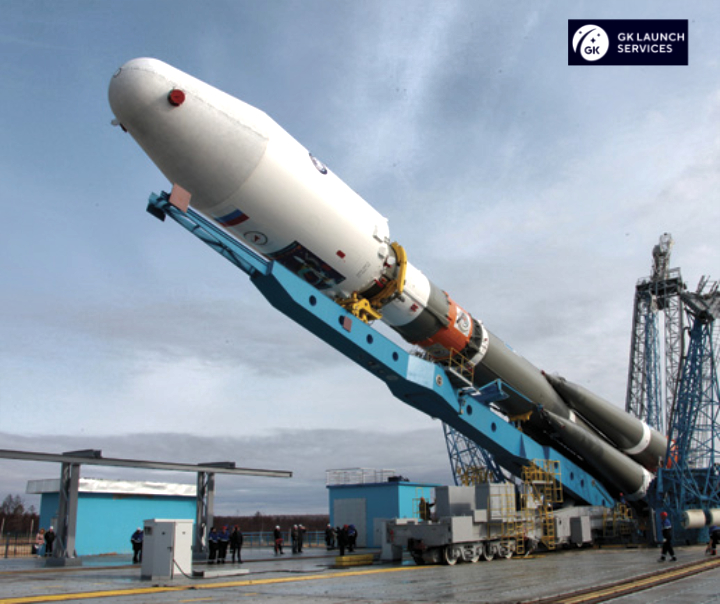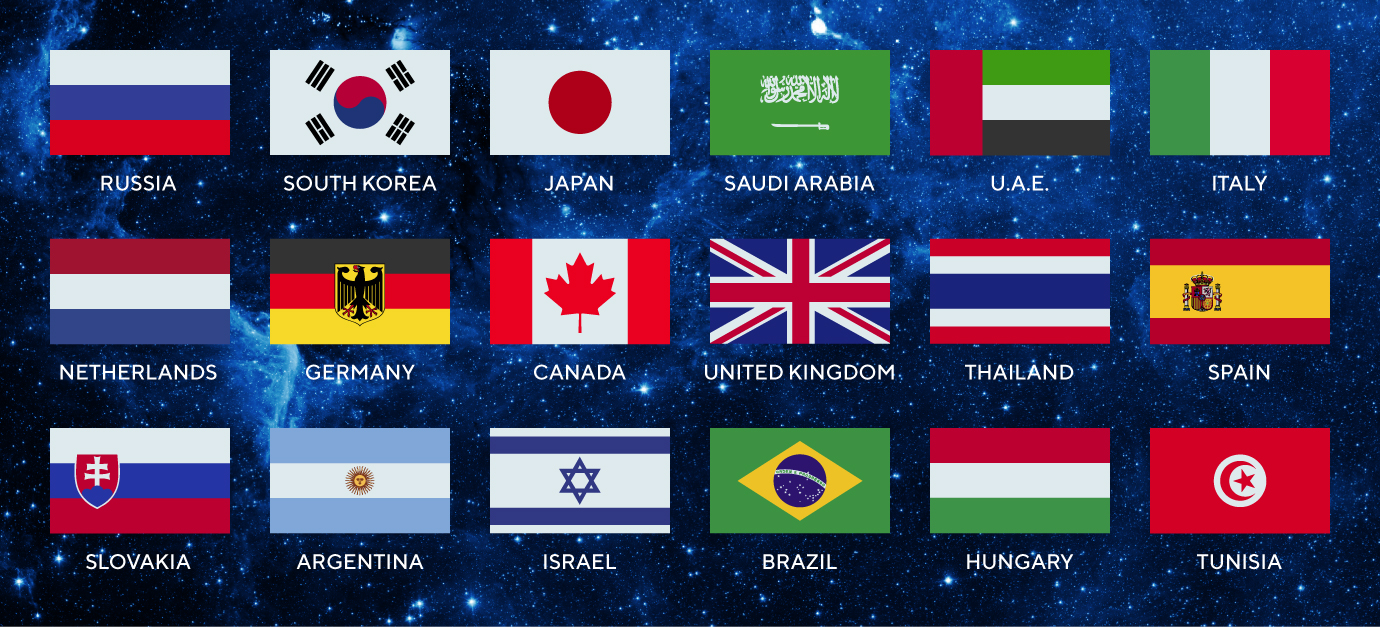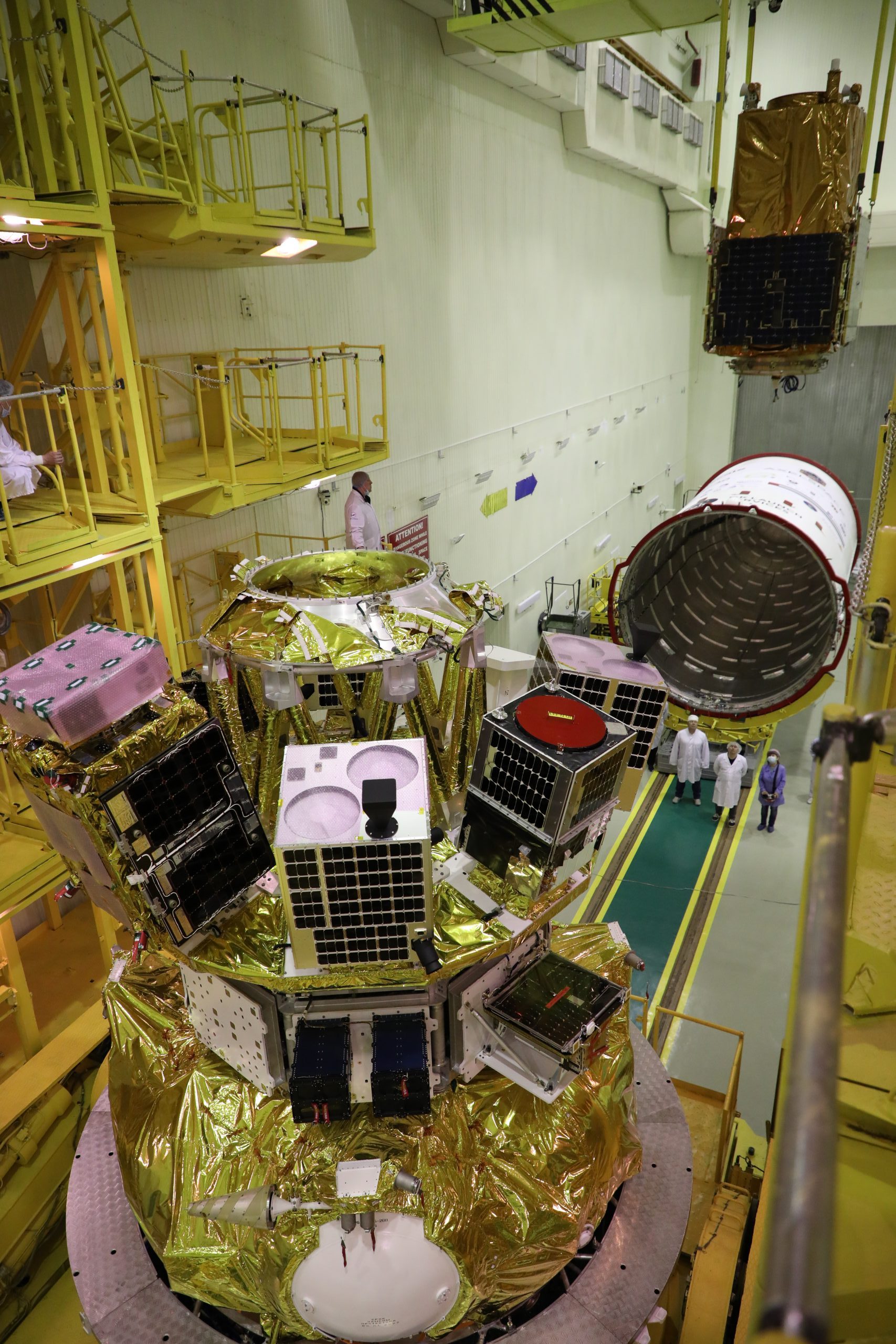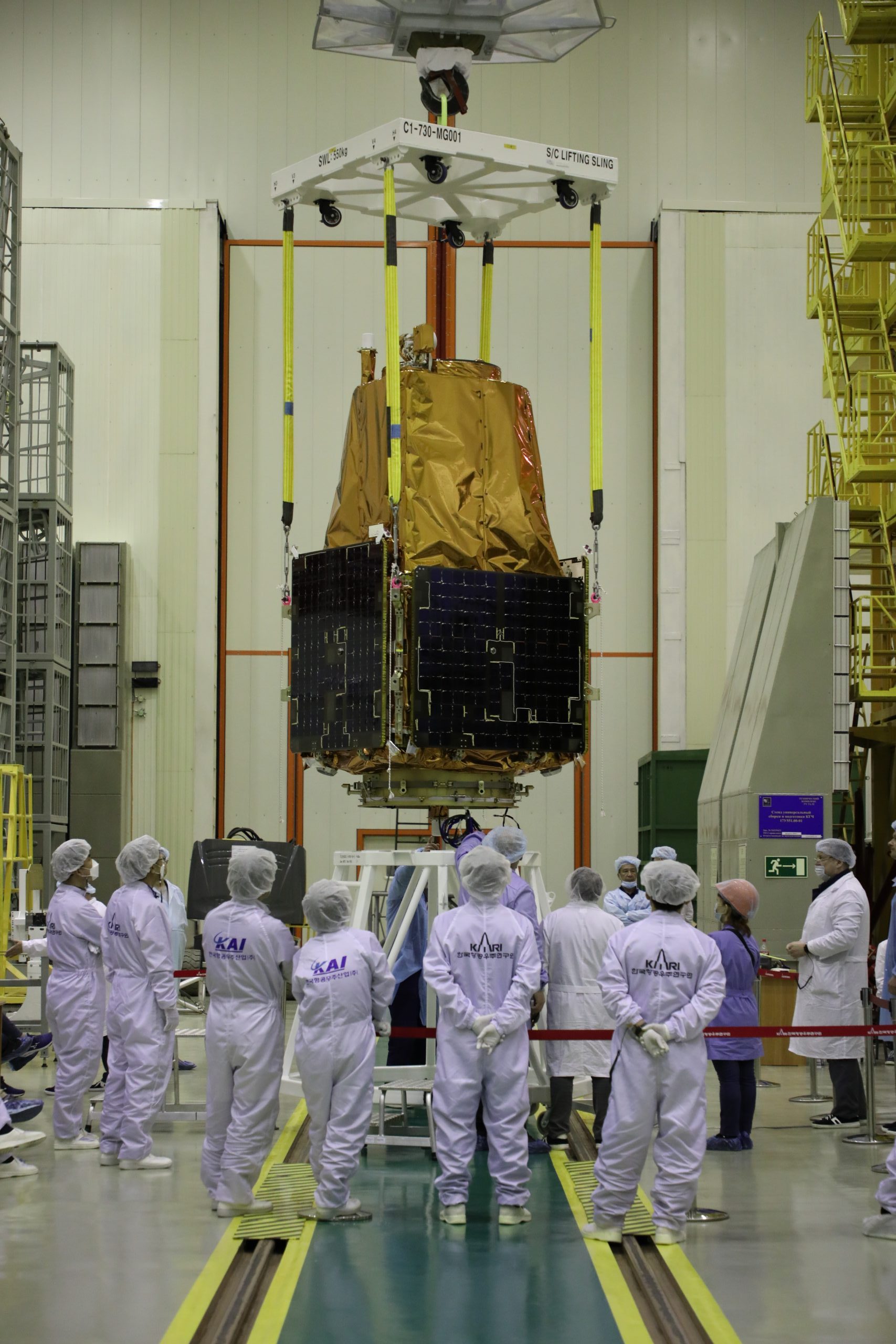
On March 20, at 9:07 a.m., Moscow Time, a launch of the Soyuz-2 launch vehicle with the Fregat upper stage by GK Launch Services is scheduled from the Baikonur Cosmodrome that will deliver 38 spacecraft from 18 countries into three Sun Synchronous Orbits (SSO).

CAS500-1 smallsat of the Korea Aerospace Research Institute (KARI), a government-funded research institute, engages not only in developing aerospace-related technologies but also in supporting a national aerospace development policy, is undertaking the implementation of Compact Advanced Satellite 500-1 (“CAS500-1,” hereafter) program for the Republic of Korea. The CAS500-1 program is a national program of Korean government to develop and operate 500 kg class medium size satellites with high resolution electro optical payload for earth observation mission on the low earth orbit. The primary mission of CAS500-1 is to provide high-resolution electro-optical images.
- a communications subsystem in the UHF band
- an X-band transmitter, an experimental GNSS (global positioning satellite system) receiver
- an optical payload for attitude determination
- laser ranging from ground for precise orbit determination.
ELSA-d smallsat, Astroscale Company, Japan, will be the first satellite to demonstrate the core technologies necessary for space debris docking and removal.
Four GRUS smallsat, Axelspace Company, Japan, are designed for the Earth observation at strict revisit rate.
NAJM-1 smallsat, Saudi Arabia, is an experimental/educational small satellite pathfinder mission for low-duty cycle earth imaging and communication from LEO.
DMSAT-1 smallsat is developed for the Mohammed Bin Rashid Space Centre to perform multi-spectral observations in the visible and near-infrared bands in order to detect and monitor aerosols in the upper atmosphere.
3 ADELIS-SAMSON (1, 2, 3) smallsat, Technion, Israel Institute of Technology, are designed for demonstration of long-term autonomous cluster flight of multiple satellites and geolocation of the position of a terrestrial transmitter.
2 Kepler 6/7 smallsat, Kepler Communications Inc., Canada, are designed for the wideband and high data-rate communication in Ku-Band, as well as low-data rate narrowband communication in S-band. The spacecraft provide data transfer services to locations, assets, and IoT systems distributed across the globe with the Global Data Service (GDS) and EverywhereIoT services.
NANOSATC-BR2 smallsat is a scientific, academic and technological satellite designed for monitoring of the Earth’s Ionosphere and Magnetic Field, Southern Regional Space Research Center, University of Santa Maria, Brazil.
KMSL smallsat is a scientific satellite (experiments in microgravity), College of Engineering, Chosun University, Gwangju, Republic of Korea.
Pumbaa and Timon smallsats are designed for obtaining images of solar corona—including the region that is 10 times the Sun’s angular diameter. Astrodynamics and Control Laboratory of Yonsei University, Seoul City, Republic of Korea.
4 Beesat-5,-6,-7,-8 smallsats, Technische Universität Berlin, Germany.
Hiber-3 smallsat, the Netherlands, are designed for the provision of satellite connectivity to “internet-of-things” (IOT) devices.
Unisat-7 smallsat, GAUSS Srl, Italy, has been developed for the tryout of technology for the precise orbit insertion of small satellites of CubeSat format. The mission is based on the successful idea of acting first as an in-orbit deployer of third-party satellites, then operating as a flexible in-orbit demonstrator for space technology, while maintaining the telemetry RF link open for radio amateurs worldwide. UNISAT-7 will release six smallsats:
- Unicorn-1, tryout of technology for the precise orbit insertion of small satellites of CubeSat format, Germany
- DIY-1, test of deorbiting mechanism and verification of space qualification of the radio and solar cells, Argentina
- FEES, educational and scientific research satellite, Italy
- STECCO, educational and scientific research satellite, tryout of attitude control technology using the gravity gradient, Italy
- SMOG-1, Educational and scientific research satellite, Hungary
- BCCSAT-1, Educational and scientific research satellite, Thailand.
The First smallsat of High School of Economics “NIU VShE — DZZ”. The NRU HSE Earth Observation spacecraft has been developed through joint efforts by the Moscow Institute of Electronics and Mathematics (MIEM) and SPUTNIX. The 3U CubeSat is equipped with an experimental camera based on the stepped (Fresnel) lenses developed by the Samara University, and with a high-speed X-range transmitter. MIEM students were responsible for qualification of the satellite’s control systems.
3U CubeSat of Sirius Center and NRU HSE. The spacecraft is equipped with an improved DeCor-type instrument to monitor quick changes in the space radiation fluxes. Researchers from the Sirius University and the Moscow University’s Scientific and Research Institute of Nuclear Physics are in charge of the project’s scientific component – handling the space radiation detector and mission’s mathematical algorithms.
6U CubeSat Zorkiy (Sputniks). The satellite is equipped with a high-resolution (up to several meters per a pixel) telescope camera manufactured by the Lepton Research and Production Association (NPO Lepton). This makes it stand out among other spacecraft of a similar size.
SIMBA smallsat, Sapienza – University of Rome, is designed for monitoring of the wildlife behavior.
GRBAlpha smallsat, University of Košice, has been developed to demonstrate the detector technology and electronics for the future “Cubesats Applied for MEasuring and LOcalizing Transients” (CAMELOT) mission, which is a planned constellation of nanosatellites providing all-sky coverage with high sensitivity and localization accuracy following detections of gamma-ray transients.
Open Cosmos, the space company that provides end-to-end satellite missions, is the supplier of two of the missions to be launched on board. The company has been responsible for the design, manufacturing, integration and mission management of the custom-built nanosatellites for Lacuna Space and Sateliot.
Challenge One smallsat is an “Internet of Things” satellite, includes an innovative communication technology developed in TELNET facilities by Tunisian expertise. This Tunisian Satellite Launch will be the basis for the creation of a new space ecosystem for Tunisia and its region.
KSU CubeSat by the College of engineering (COE) at King Saud University is sending telemetry data and photos from the space to the ground station.
Lacuna Space based in UK and NL provides global connectivity for Internet-of-Things devices.
Sateliot is the satellite telecommunications operator that will launch a constellation of nanosatellites to democratize the Internet of Things with 5G coverage. The company plans to deploy 16 satellites from 2022 reaching 96 and an investment of over 100 million euros by 2025.

The launch operator is GK Launch Services (a subsidiary to the Roscosmos State Corporation).


GK Launch Services is a company established by Glavkosmos (a subsidiary of ROSCOSMOS State Space Corporation) and International Space Company Kosmotras. Its business is focused on setting-up and management of Soyuz-2 commercial launches from the Russian spaceports.
